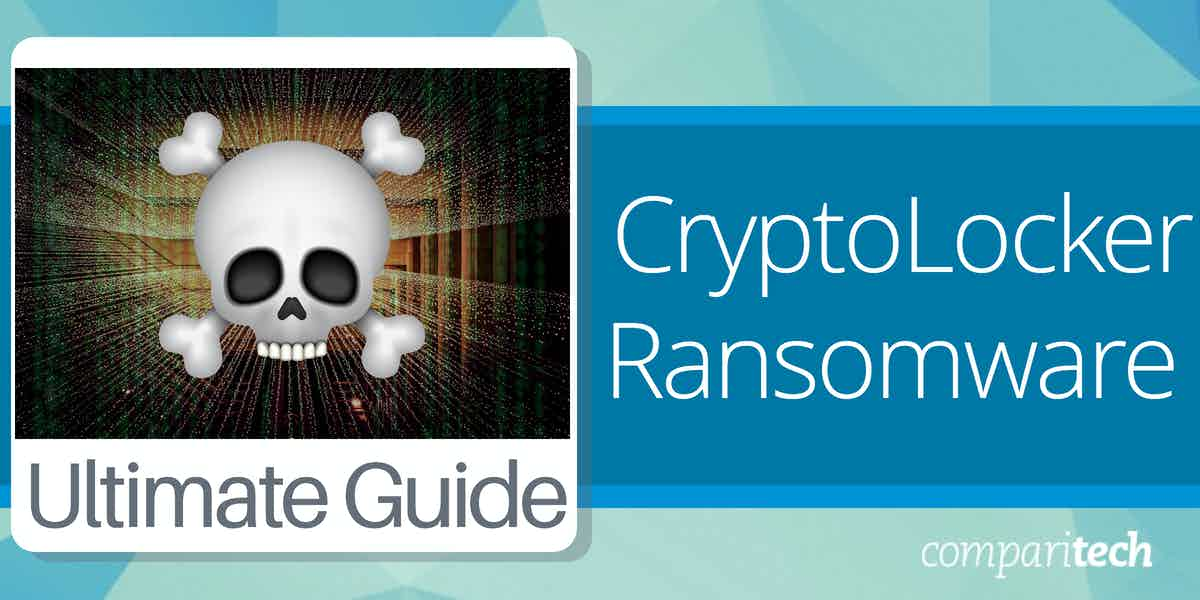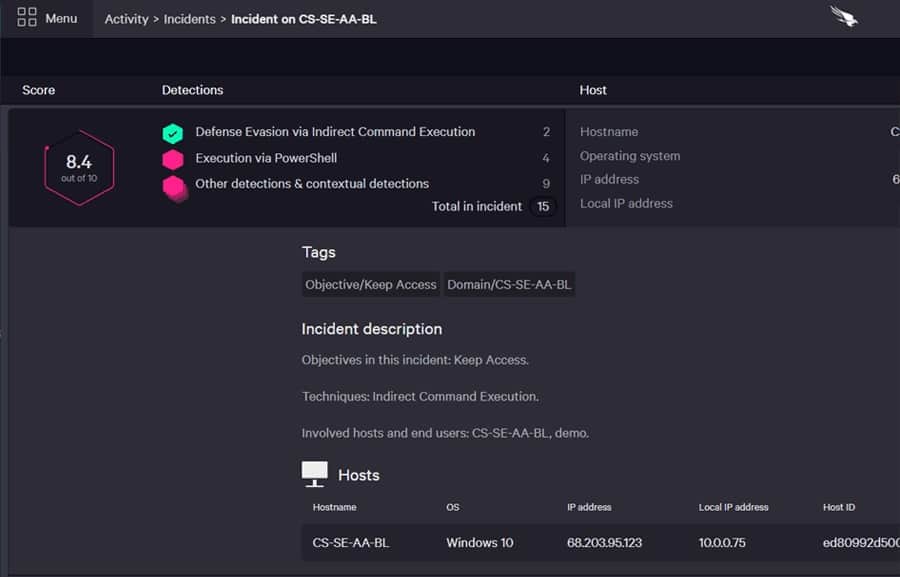CryptoLocker ransomware tore around the world in 2013 and 2014 in an eight-month cybercrime spree
Although CryptoLocker is no longer a threat, it leaves a trail of variants and imitators in its wake, so it is still worth studying. The target of CryptoLocker was Windows computers.
The delivery mechanism of CryptoLocker ransomware was a Trojan. This was spread by a botnet called Gameover ZeuS. The ransomware put pressure on victims to hurry up and pay by placing a time limit on the availability of the decryption key.
CryptoLocker was first spread on September 5, 2013, and it was shut down in May 2014. During its period of operation, it attacked about 500,000 computers.
What is a botnet?
A botnet is a group of infected computers controlled from a central server over the Internet. The active mechanism on the captured computer can open a connection and scan the remote server for instructions – that host is called the “command and control” (C&C) server.
The computers in the botnet are called “zombies.” They aren’t entirely controlled by the hackers and continue to operate as usual. In most cases, those companies don’t even realize that their devices are working for other people.
The purpose of a botnet is to spread a task between many computers. Some botnets control hundreds of thousands of private computers, and other control IoT devices, such as security cameras. Defense mechanisms in cybersecurity software can read the IP address of an attacker and block it. So, hackers invented botnets in which each computer just attacks a target once.
Typically, these legions of computers are used in DDoS attacks, where many computers simultaneously make a connection request to a Web server, overwhelming it. They are also used for spam email campaigns.
Spam filters on most email systems divert emails from one IP address in bulk by sending those large mailouts from lots of different locations, the botnet ducks that block.
Gameover ZeuS
The Gameover ZeuS botnet was created and controlled by Evgeniy Mikhailovich Bogachev, a Russian hacker. It included more than 1 million zombie computers. The system used a Peer-to-Peer architecture for communication with the C&C server. This reduced the traffic traveling in and out of the server and made the C&C harder to trace.
The primary purpose of Gameover ZeuS was banking fraud. The mailing campaign for the CryptoLocker ransomware was a secondary task for the botnet. Not only did the C&C server issue instructions to send out a standard email, but it also generated fake domain names. Emails only need a valid source address if the sender needs a reply. However, the structure of ransomware attacks means that no response is necessary for the campaign to be successful.
In June 2014, an international alliance of law enforcement agencies shut down the Gameover ZeuS C&C servers in a planned exercise called Operation Tovar.
How does a CryptoLocker ransomware attack begin?
CryptoLocker had two methods of ingress. One was with a spam email that had a virus hidden in an attachment. The other was through illegal download sites, which supplied the virus installer bundled with the video inside a Zip file or making the video unusable but with an accompanying text file that instructed the recipient to download a codex plug-in. That plug-in was the installer for the Trojan.
The email purported to be from a shipping company with a delivery notice attached. There were two methods used to get the Trojan on the target computer. One was to make the file password protected with a note in the email that included the password. Applying the password unlocked the file and released the installer.
It is difficult to work out why the hacker bothered with that password route because its other attachment method was just as effective. This was a Zip file, which seemed to contain a PDF. However, that was a fake extension because when the user unpacked it and clicked on the file to open it, the file ran as an executable and installed the ransomware by copying it down from the C&C server.
What Does CryptoLocker Do?
CryptoLocker starts its routines as soon as it is launched – it doesn’t delay it. The system copies the program file to the %APPDATA% and %LOCALAPPDATA% directories. The installer adds a key to the computer’s registry to get the software to run on startup. It then launches the ransomware in two processes – the second is a persistence module that will relaunch the ransomware program if its process gets terminated.
As soon as the main program executes, it scans all accessible drives and lists them. It then visits each drive that includes non-executable files, records its directories, and then works through the list, encrypting them. The system uses RSA encryption with a 2048-bit key. The encryption process creates a new file. However, the process begins with a blank file with the original name and then deletes that. Overwriting the original makes it unrecoverable through the Recycle Bin or any other file recovery system.
Once a file has been encrypted, its original name is recorded in a text file and written to the registry in HKEY_CURRENT_USER/SoftwareCryptoLockerFiles.
The name of the encrypted file is altered to have an extra extension on the end of it. Different versions of CryptoLocker had other naming conventions for encrypted files. The added extension was either .encrypted, .cryptolocker, or a string of seven random characters.
Once all of the non-executable files in a directory had been encrypted, the program wrote a text file called DECRYPT_INSTRUCTION.txt or an HTML file called DECRYPT_INSTRUCTIONS.html. That included a list of the encrypted files. A later variant, called CBT-Locker, wrote out one file listing all encrypted files in the exercise for all directories and saved that to the directory where it started its work. This file was called, !Decrypt-All-Files-[RANDOM 7 chars].TXT or !Decrypt-All-Files-[RANDOM 7 chars].BMP.
After encrypting all of the non-executable files in one directory, it would move onto the next until all files on a drive had been encrypted. It would then move on to the next drive accessible by the current user account and repeat the process. The activities of the CryptoLocker ransomware would extend to all of the drives that the active user account could access, which included mounted drives, shared drives, and cloud drives.
The ransomware could not replicate itself or move around the network. It did not include a utility to allow any hackers manual access to the infected computer.
Public key encryption
CryptoLocker ransomware used a public key cipher for its encryption. Public key encryption is also known as asymmetric encryption. This is because the encryption and decryption processes do not use the same key. That means that the decryption process is not just a matter of directly reversing the encryption. Instead, a complimentary formula is used to decode encrypted text.
It is impossible to work out the decryption key from the encryption key. Therefore, as long as the encryption creator keeps the decryption critical private, it doesn’t matter who knows the encryption key. Thus, the encryption key is public, and the decryption key is secret.
CryptoLocker uses the RSA public-key encryption system. RSA is very widely used because it is integrated into the authentication phase of the SSL system. SSL uses the Transport Layer Security protocol (TLS), which is centered on RSA encryption.
In the case of CryptoLocker, the virus contacts the C&C server, which sends the public key for encryption. As this key is of no use for decrypting files, it doesn’t matter if snoopers intercept the transmission of the key. It also doesn’t matter if the user knows the encryption key. So, the key is left within the ransom instructions as a reference that enables the C&C server to locate the correct decryption key to send once payment has been made. When it first acquired the encryption key, the ransomware stored it for reference on the victim’s computer in the registry key HKCUSoftware/CryptoLockerPublicKey.
CryptoLocker maintained a database of all of the encryption keys that it had ever used. However, it ceased to make the decryption key available to the victim after 72 hours had elapsed following an attack. This added a time element to the ransom, which motivated the user to hurry up and pay.
Cheekily, in November 2013, the hackers set up a service that was seemingly offered by data recovery consultants that offered to restore the files for those victims who had missed the 72-hour deadline and were no longer able to get the files decryption key. The recovery service was charged at a higher price than the original ransom.
During Operation Tovar, security analysts working with the authorities captured a copy of the encryption key database. Analysis of the database revealed that the CryptoLocker ransomware had made more than $3 million over its lifetime. Also, the analysts discovered that the process didn’t always return the correct decryption key in 25 percent of the cases where the victim paid the ransom. It was calculated that only 1.3 percent of victims paid the ransom.
The ransom process
On completing the encryption process, the ransomware altered the wallpaper of the Desktop on the target computer—this displayed instructions for payment. The price demanded was $400, which could be paid as 400 Euros or the Bitcoin equivalent. Those paying cash did so via MoneyPak.
The victim was warned that the decryption key would only be available for 72 hours, but this period was 100 hours in some variants.
Blocking CryptoLocker attacks
As the CryptoLocker ransomware tricks users into downloading and activating it, the most robust defense against this system is user awareness. Although CryptoLocer is no longer around, there are plenty of imitators still circulating, so it is essential to make sure that users are aware of the consequences of their actions. It is also vital to protect data on the systems, especially if you follow a data privacy standard.
Desktops running Windows were the targets of CryptoLocker ransomware. You need endpoint detection and response (EDR) systems installed on each device on your network to protect against ransomware attacks like CryptoLocker. Consider the following two security systems.
1. CrowdStrike Falcon Insight (FREE TRIAL)
CrowdStrike Falcon Insight combines an EDR on each endpoint with a cloud-based coordinator. The on-site module is called Falcon Prevent.
The endpoint agents operate independently, which means that they can maintain protection even if there is no connection to the Internet. The cloud coordinator receives event log uploads from all endpoints on a network while links are available. The system analyzes this data based on threat intelligence gathered from all CrowdStrike customers. This system looks for abnormal behavior and so can identify zero-day attacks.
Insight includes response capabilities. IT can isolate a computer from the network to stop a virus from spreading. It is also able to block communications with suspicious IP addresses and suspend user accounts.
You can get a 15-day free trial of Falcon Prevent.
2. ManageEngine DataSecurity Plus
ManageEngine DataSecurity Plus is a sensitive data protector specifically design for companies that need to comply with HIPAA, PCI DSS, and GDPR. The protection this service gives to files also makes it a good choice for blocking ransomware. It includes data discovery and categorization systems, which identify personally identifiable information (PII).
The service monitors emails and USB devices to block downloads and prevent data disclosure. It also has a file integrity monitor to guard against unauthorized changes. The service can be set up to implement actions on the identification of file tampering automatically.
The software for ManageEngine DataSecurity Plus protects Windows systems and installs on Windows Server, and it is available for a 30-day free trial.
L’article What is CryptoLocker Ransomware & How to Protect Against It? est apparu en premier sur Comparitech.



0 Commentaires